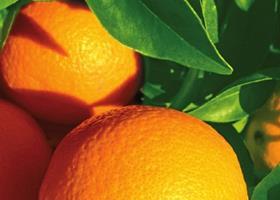
The California citrus industry had been particularly impacted by the multi-year drought. Due to a dwindling supply of irrigation water, growers were forced to uproot thousand of acres of oranges rather than lose money.
This year, however, growers have been wading through muddy orchards attempting to pick enough fruit to supply citrus-depleted markets, all the while fighting to keep pace with a steadily maturing crop.
“No one is really complaining, however,” admitted Tom Wollenman of LoBue Citrus. “The rain has delayed the harvest somewhat as the groves are pretty muddy, but we are managing to stay on top of things so far.”
“All this rain has kept fruit availability to a minimum and has had the industry spinning its wheels,” said Steve Holly of Voita Citrus. “Every time we get a break in the weather, it’s a question of what to pick first. Oranges? Lemons? Mandarins?”
“The weather has kept a lid on the amount of fruit available – no question,” agreed Mark Golden of Umina Brothers. “On the other hand, the limited volume has helped support fob prices.”
According to the USDA’s Market News Service, as of late February fob prices for 56s, 72s and 88s have been 20 per cent above last year’s levels.
Another factor likely to bolster the current strong market for navels is that this year’s navel crop is turning out to be far shorter in production than originally expected. Last September, the USDA forecasted 2016/17 seasonal production at 81m cartons (18kg) or about 8 per cent less than the 88m cartons of a year ago. In late February, with less than half the crop harvested, most industry observers were already predicting the navel crop would tally to 75m cartons at most.
“It’s looking like this crop is down anywhere from 15-20 per cent below last season,” noted Roger Griess of Suntreat Packing & Shipping. “Despite all the rain we’ve had, it hasn’t produced the kind of growth in the fruit you might expect.”
“I’m seeing fruit-drop at rates 15-20 per cent higher than last year,” added Wollenman. “It’s mainly due to the rains.”
A year such as the current one with abundant precipitation typically causes a growth spurt in navel oranges, resulting in an increase in the number of cartons packed. So far this season, fruit diameter has remained static, peaking on count 88 followed by 72s, 56s and 113s respectively.
“There were some pretty cold evenings last November that may have put a lot of the trees in early dormancy before the rain began, which possibly has kept the fruit from sizing more than it has,” said Wollenman. “However, our weather should start to warm up in March and allow the fruit to grow some more. I think we’ll end up with a fruit size curve peaking on 72s followed about equally between 56s and 88s.”
The extraordinarily wet winter has growers keeping a close eye on fruit quality.
“There have been some challenges so far this season, especially for export markets,” said Golden. “The fruit this year is infused with water, making it pliable and prone to disease. Once the weather warms up in March, we will likely start seeing some rind issues that will require close monitoring.”



